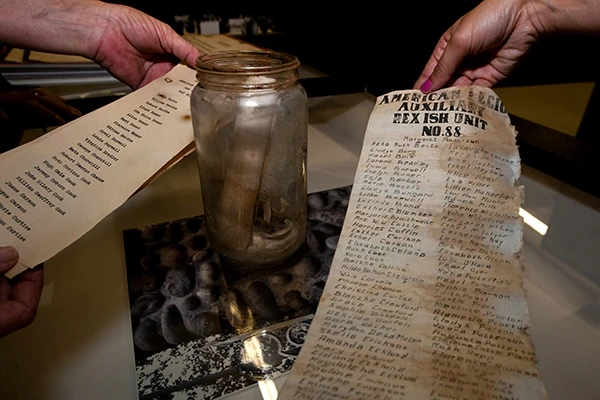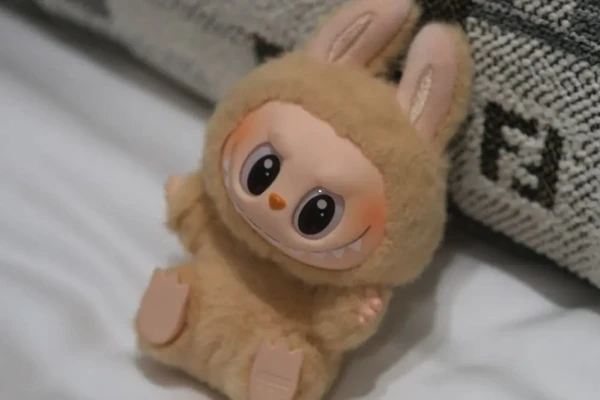
In 100 years, Americans smoked the cigar of the famous General Grant.
“Our carpenter's salary is 180-200 rubles for a 5th grade. The food situation seems fine, but we haven't seen meat for years. Our leader Brezhnev sends everything abroad, to Cambodia, India, Iran, Korea...” This note to descendants was found in 2018 in an empty vodka bottle during the renovation of a maternity hospital in Chelyabinsk: it was apparently laid during construction in 1980. At that time, it was a common practice, and not only in our country: it is believed that there are currently about 5,000 unopened letters to the future worldwide. And leading the pack are Russia and the USA. But the content of the messages is very different.
In fact, people have been leaving messages to their descendants since time immemorial. However, these messages began to be called time capsules only in the last century: at that time, in addition to letters, something else was found (or added) to them. For example, this was done by veterans of the Civil War of 1861-1865. At a meeting in Chicago in 1879, they decided to send a cigar from their honored guest - former U.S. President Ulysses Grant - to their descendants: the battle-hardened general often preferred sitting with a cigar in the lobby of the Willard Hotel to working in the Oval Office and kept this habit (hence, by the way, the term “lobbyists” - this is how Grant jokingly referred to his interlocutors). This very cigar of Grant, along with a letter (shown in the photo at the top right), was sealed in a bottle and left for 100 years: Americans generally prefer longer terms for their time capsules, unlike us. In 1979, the bottle was broken, and the cigar was smoked in turn by three grandsons of the veteran - the organizer of the meeting.
However, the founders of the tradition are considered not them, but Anna Daym, their compatriot, who was earlier. In 1876, she gathered personal belongings, photographs, postcards from friends, and sealed everything in the “Safe of the Century,” instructing it to be opened in 100 years. And it was opened, in the presence of President Gerald Ford: he was looking for an opportunity to promote himself after a recent embarrassment. Ford was then planning to lay a capsule with the signatures of 22 million Americans in honor of the 200th anniversary of the USA, but it... was stolen! Right from the train while being transported to the laying site. As this week’s hero Donald Trump would say, “If I were president, that wouldn’t have happened!”
The fate of that time capsule, the items from which are shown in the photo at the top left, was also unusual. It was laid after a conference in Aspen, Colorado, in 1983. And hardly anyone would have remembered it, except for the participants, if one of them had not been Apple founder Steve Jobs. He placed his computer mouse Lisa, named after his daughter, into the tube (that’s what the capsule looked like). The tube was buried in a field near Aspen and was supposed to be opened in 2000 (they wanted to wait longer, but Steve did not agree). And then: they lost that place! Fortunately, local diggers got involved: in 2013, the capsule was finally discovered. But Steve Jobs did not see this: he passed away in 2011...
“Our time is rich in creative thought and discoveries... But the production and distribution of goods are completely disorganized, so everyone lives in fear of being thrown out of the economic cycle and losing everything. Moreover, people in different countries keep killing each other. I believe that descendants will read these lines with a sense of justified superiority” - this is from a letter that Albert Einstein placed in a time capsule created by the Westinghouse company for the World’s Fair in New York in 1939 (in fact, this cylinder shaped like a bullet, 2.3 meters long and 16 cm in diameter, gave the name to such messages: “time capsule”). It is made of the proprietary alloy Cupaloy, and inside are film footage, microfilms with dictionaries and texts, samples of textiles, metals, plastics, and household items: a pencil, a fountain pen, a pack of cigarettes, coins, a child’s doll. The capsule was buried in a New York park in the center of the exhibition, where it is supposed to be stored for 5,000 years!
And the most grandiose message to descendants is the “Crypt of Civilization.” Imagine a small room 6×3×3 meters (in fact, this used to be a swimming pool at Oglethorpe University, Georgia), stuffed to the brim with items. Household appliances and equipment, dishes, food, clothing, toys, a typewriter, a radio receiver - thousands of items. On microfilms - the Bible, the Quran, fiction, scientific research. And recordings of the voices of Stalin, Roosevelt, Hitler, and Mussolini: in 1936, when the “Crypt” began to be assembled, they were considered equivalent leaders of the civilized world (however, this illusion was not immediately abandoned with the onset of war: the policy of appeasing the aggressor was not invented today). In 1940, the entrance was sealed for six thousand years - longer than the age of the oldest pharaohs’ tombs! Truly, a project conceived by a great optimist...
In Russia, there are plenty of time capsules. It’s understandable: after the XXII Congress of the CPSU (1961), where they promised to build communism in 20 years and deputies solemnly laid the corresponding message to descendants, a real boom began! Capsules were laid by almost every school, universities, and factories. The text was like a copy: communism, the struggle for Lenin's cause, the relay of generations. And its perception changed depending on the context, that is, reality. Here, for example, are lines from a message in 1960, which was solemnly extracted in “Artek”: “We are a little envious of you. You live in communism, people fly to the Moon every day, and probably there is a spaceport in ‘Artek’.” In 2000, this caused a bitter smile: “Artek” in Ukraine was not in the best condition at that time.
There are also other letters. In 2009, during the renovation of a house in Seversk, a letter from Gulag prisoners who built the city was found. On scraps of a cement bag, they scrawled in coal a plea not to forget about their fate and to remember them kindly. And at the end, a postscript: “Beat the communists, overthrow the government!”
But now it’s not about them, but about other messages, where through the familiar clichés about communism and Lenin's cause, sincere joy slips through: how much we have managed to do for you! To find oil in the tundra, to build Severodvinsk on a swamp, to be the first to conquer space (this is from a letter in 1965, which included a newspaper, photographs... and a pair of skates). The author, a 60-year-old worker from Leningrad, is confident: “You will live better than us, perform feats in the Galaxy, make the Earth beautiful. And do not allow another war.”















Leave a comment